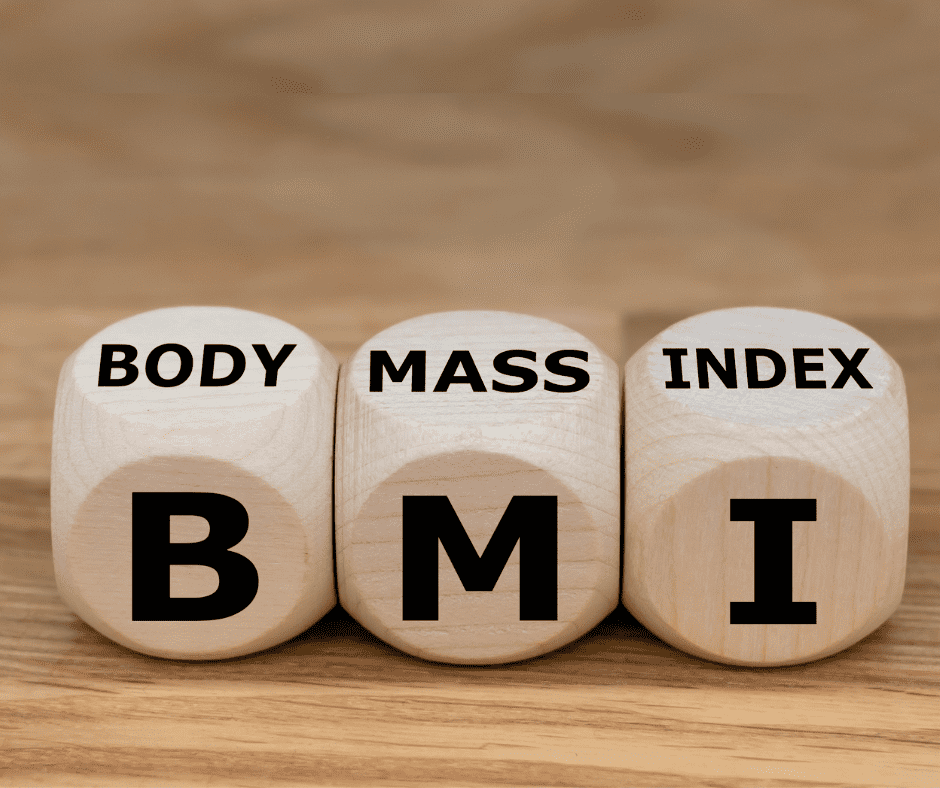“Normal” range of BMI – Is Body Mass Index everything?
When someone talks about healthy living or when we ask people if they are healthy the first thing you hear is BMI. Many times, people think they are in the normal range of BMI, and they are healthy. Is it true? Does being in a normal range of BMI indicate the overall health of a person? Let’s find out.
We live in a world where numbers have a prominent role in our day-to-day life. We love numbers so much that we keep looking at our smart watches or Fitbit that how many steps we have walked today or how many miles we have covered today. But is meeting that BMI healthy range enough to live a healthy life?
What does Body Mass Index mean?
The Body Mass Index (BMI) was developed between 1830 and 1850 by Adolphe Quetelet, a Belgian mathematician, statistician, and sociologist. Quetelet calculated the Body Mass Index as a relationship between height and the weight of a person (the body mass divided by the square of the body weight expressed in kg/m2 ).
The ranges of BMI are categorized by the World Health Organization and National Institutes of Health as, a person is considered: paragraph
- underweight if the BMI is lower than 18.5 kg/m2
- “normal” or “healthy” if it is between 18.5-24.9 kg/m2
- overweight if between 25-29.9 kg/m2
- obese if 30 or more
Body mass index formula
Using this formula, one could calculate their BMI:
BMI = masskg / heightm2
Let’s say there is a person named Joe and he is 5 feet 10 inches tall, and weighs 150 lbs. Joe’s BMI is 21.5. Then there is another person Ben who is also 5 feet 8 inches and weighs 150 lbs. Ben’s BMI is 22.8. Now both Joe and Ben are in “normal” range for BMI. Does that mean both are healthy? Maybe?
Does that mean BMI is the sole measure of overall health?
BMI does not take into consideration Body Fat% which is a primary risk factor for some chronic diseases.
Joe's body fat% is 30% and Ben's body fat% is 15%.
So that means Ben has 127.5lbs of Lean Body Mass with 22.5lbs of Body Fat Mass in comparison to Joe who has 105lbs of lean body mass and 45lbs is body fat mass.
Both Joe and Ben are in the normal range of BMI while carrying very different body fat%. BMI calculations can’t differentiate fat from muscle.
BMI does not measure body fat distribution. Fat stored subcutaneously is the most visible, but causes much less harm than “visceral” fat (which can cause inflammation damaging your arteries), yet is much less visible from the outside.
Body mass index is a simple ratio
BMI does not take into account other important health markers, such as:
- Blood pressure - So, if someone has a high blood pressure, simply being in the right BMI range is not going to help in healthy living.
- Cholesterol levels - LDL and HDL parameters. One can be in the right BMI range and still can have a higher total cholesterol level which affects the overall health.
- Sleep quality - “Insufficient sleep has been linked to the development of a number of chronic diseases and conditions, including type 2 diabetes, cardiovascular disease, obesity, and depression.”
Body Mass Index is not diagnostic
- Hormonal problems like PCOS or thyroid disfunction cannot be confirmed nor ruled out by BMI. Neither does BMI provide insight about any hormonal disruption in the body or the presence of inflammation.
- People in different demographics can have different BMI. A normal range of BMI might be different depending on genetic predisposition. There's strong evidence that at any given BMI, these health risks are markedly higher in some ethnic groups than others.
Can you sit back if you’re in a normal range of BMI?
Isolated from these additional pieces of information and contexts, it is not possible to determine if someone is healthy or not healthy with only the Body Mass Index. At best it is a place to start.
More problematically, someone could fall into the “normal range” and feel like there’s no need to look any further, while in fact there are many things that could be silently undermining their health. Or maybe they think that if their BMI is on point, they don’t need to be purposefully active or consider what their eating.
Problems with body mass index
I always had a very social and active lifestyle (including workouts) where I used to go out with friends for happy hours. In 2020, I went for the annual medical checkup and found LDL was 115 which was higher than the normal range (100 mg/dl). That report triggered a though in my mind that I always thought everything should be fine with my body since my height and weight put me in the normal range of BMI. But everything was not fine.

I didn’t want to go straight on medication as the cholesterol level was only a little over, not too high. So I decided to improve my lifestyle to bring down the LDL level by shifting eating behaviors in the context of my energy needs, and having balanced meals with enough fiber.
I went back for a medical checkup after a few months of following the new lifestyle, and guess what I found in my lab report! The LDL was dropped from 115 to 105 md/dL. I continued with my new lifestyle and now feel much better from the inside. I have more energy and my body feels great.
My dad is 67 years old, and his BMI is around 30 which is considered as obese. But he never had any chronic conditions (knock on wood). He’s always been very active and likes his walks (3-4 miles every day for last 20 years). Dad eats mostly home cooked meals and less processed food. This reinforces the point that BMI cannot tell if a person is Healthy or Unhealthy.
So, what should we be doing instead of BMI?
- Get lab tests to know your triglycerides, cholesterol, blood pressure, blood glucose levels. Discuss these results with your physician.
- Adjust eating behaviors. Even small changes can make a meaningful difference over time. Working with a nutrition coach can help you make new choices, which become habits that will stick for the long term.
- Monitor the calorie intake and make sure it matches with the daily goals of energy requirement.
- Choose higher quality food (less processed and more whole food), and make sure to get enough fiber and micronutrients by eating a wide variety of vegetables, fruits, and whole grains.
- Move often and get regular physical activity. Target a certain number of daily steps, or 30 minutes of moderate level activity.
- Get enough sleep. Getting enough quality sleep promotes better recovery from stress and exercise, helps keep your weight under control (and therefore influences your BMI,) and lowers your risk for the serious health problems mentioned.
In the end, you want to have a comprehensive picture of all the aspects of your health and make health conscious choices no matter where you currently land on the BMI chart.
Himanshu Sethi is a nutrition coach who helps corporate professionals in their 30s and 40s lay a foundation for long-term health, so they can enjoy the later stages of their life happily with their loved ones.
Find other articles written by Himanshu on his coach profile. These features reflect his step-by-step approach to balancing healthy habits with your busy day-to-day job.




